OLD POST ALERT! This is an older post and although you might find some useful tips, any technical or publishing information is likely to be out of date. Please click on Start Here on the menu bar above to find links to my most useful articles, videos and podcast. Thanks and happy writing! – Joanna Penn
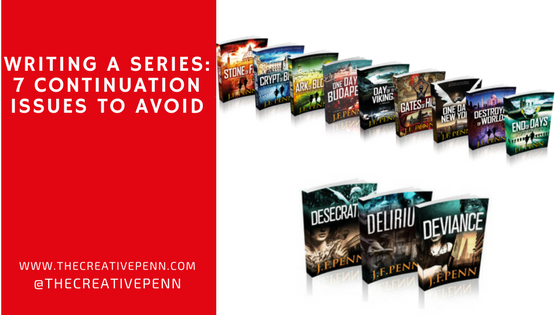
I recently heard PD James (aged 91) and Ruth Rendell (aged 81) speak in conversation with each other. They are both Baronesses with innumerable honorary degrees and between them have over 100 published books. James has the Adam Dalgliesh and Rendell the Inspector Wexford mysteries which have formed the backbone of their literary works for the last 45+ years. They are excellent role models for the aspiring author who wants to create a long term writing career.
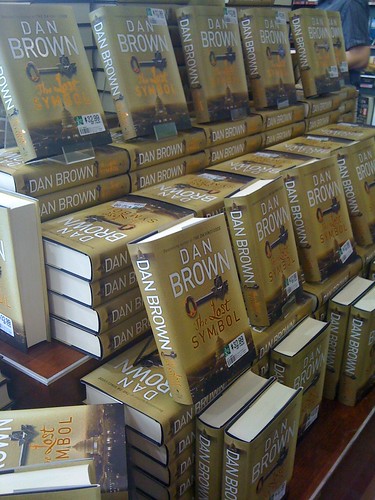
Here are my issues and suggestions on how you can avoid the same pitfalls. Please also let me know your tips in the comments.
(1) Continuation of character history, physical and personality traits
I thought I knew my characters well but when it came to writing scenes and fleshing them out in Prophecy, I realized I couldn't remember certain aspects. Does Morgan have a violet slash in her right or left eye? Where does Jake come from? Did Morgan actually meet Martin Klein, the Brain of the ARKANE Institute? How old is little Gemma? Where did Morgan's parents meet and why did they split up? I had rough notes from writing Pentecost but no official character sheets to follow. I ended up re-reading Pentecost and copying sections of the book into different pages per character and using them as guidelines for Prophecy so these pages now act as character sheets which I will add on for the next book.
(2) How much to repeat in case people don't start with the first book
With series books there is always an aspect of setting the scene again. You have to explain characters or part of the fundamental storyline in subsequent books in case people start reading that one first. I think each book should be a stand-alone as well as being able to be read in sequence but it's hard to know what to repeat and also how to phrase it without sounding repetitious. For example, I have to explain that ARKANE stands for the Arcane Religious Knowledge And Numinous Experience Institute and that it has a secret base below Trafalgar Square in London from which they solve religious and spiritual mysteries. ARKANE is consistent across the books. I don't want to bore previous readers so I can't include too much detail but I need to explain it for new readers. The challenge is balancing these respective needs.
(3) What I remember vs what I actually wrote
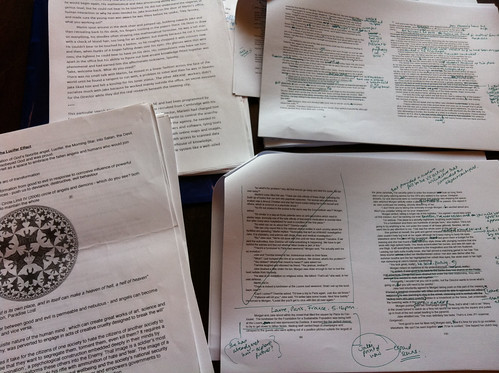
When writing a book we cut out a lot of scenes and extraneous material in the rewrites and editing process. Because Pentecost was my first novel, I had so much source material and research as well as a lot of rewrites and editing. In approaching Prophecy I found I couldn't really remember what I included in the book and what was still in my head or on discarded passages which of course, the reader wouldn't know about. The only cure for this is to re-read the first book again (or the whole series again if you are further on). I must say I was very scared to re-read Pentecost, wondering if I would be upset with it and want to rewrite that instead! But I am still happy with the book and I refreshed my memory on the details.
(4) Retrofitting cover design and branding
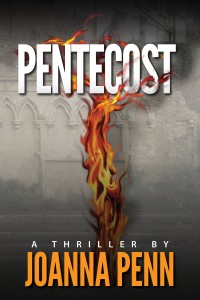
(5) A story in itself but also part of a series
Each book must be a stand-alone story with its own plot, character arcs etc but the challenge of a series is also to tie the new book into the old one and close off the open questions left hanging at the end of the prequel. It must also open new questions that will be tackled in the next book so you can get people ready to buy the next in the series. Ideally, one would plan the whole series end to end and indeed some fantasy authors do this kind of extensive world-building. I have been a ‘pantser' in this regard, flying by the seat of my pants and just waiting for serendipity to give me new material to work with. I'd like to get this process more organized with the next few books. I always had Prophecy after Pentecost but now I have at least 5 more books planned, it would be better to at least roughly outline a path through that so I don't end up writing this post again next year!
(6) Does the protagonist change within the book or over a series of books?
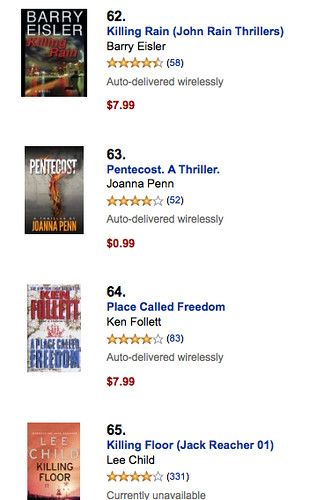
Lee Child's protagonist, Jack Reacher, doesn't change, he is always the loner hero, but others change around him. There is no central character arc but there are other people who change. In a similar manner, James Bond never changes across multiple adventures. This is the type of model I want to follow but that doesn't gel with most writing advice that focuses on a central character arc.
(7) How to cope with timescale over multiple books
A thriller must always have some kind of ticking clock that keeps the pace going. There must be high stakes worth caring about and potentially dying for. This makes the adventures pretty hardcore for the protagonist and across multiple books, it seems as if they are super-human. But we don't want to see Bond taking a day off in his pajamas or Reacher taking a soak in the hot tub (or perhaps we do??!) So I kicked off Prophecy a few weeks after Pentecost had finished but find with the ending of Prophecy I am immediately heading off into the next adventure with a scene that links to the next book (working title Pharaoh.) The issue as subsequent books are added is around whether to change the seasons and age of the characters, or to keep them eternal like Reacher and Bond. It's manageable with 2 books but some series writers are at 25+ so there has to be some development – or does there?

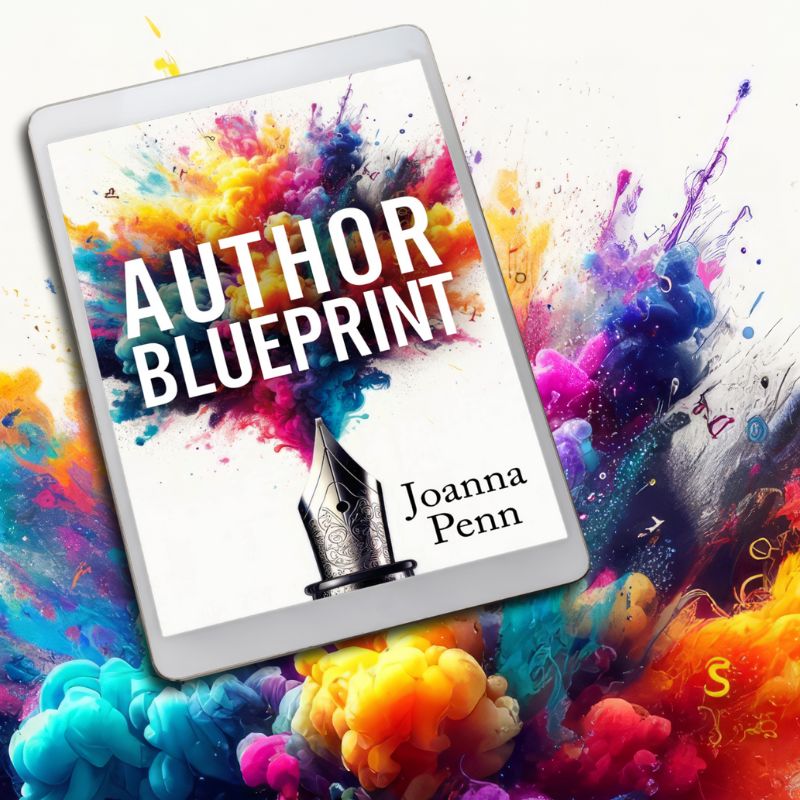
One author to check for how she starts each new book of the series is Sue Grafton and and her alphabetical mysteries (A is for Alibi, etc). I’ve read all of her books and after the first few i just skimmed the part that explains the series to a new reader. it wasn’t a big deal to me as the reader.
Regarding character sheets: I write a biography of my main and secondary characters that includes typical body language as well as appearance, goals, dreams, etc. Some of the info is written before the I start writing the novel and some is added as i develop the character through the process of writing the story.
I’m writing a trilogy with 3 generations. So, I also have a timeline that includes births, deaths, dates someone moved to a new place, marriage dates and any other important dates that affect the characters and plot.
In the 1st book of my trilogy, the main character begins as a teen and ages through to her mid 20s at the end of that book. The second book will begin when that character is about 35 and her illegitimate daughter is 18. The daughter will be the main character in this 2nd book. It will proceed the same for the 3rd book. The trilogy covers 1917-1970. All the main characters experience emotional changes.
In Sue Grafton’s books, her main character ages, but very slowly, as do her secondary characters. The MC goes through relationships and learns from them but otherwise stays pretty much the same. Her main secondary character does as well, but on a lessser scale.
Good luck with your challenges and hope you won’t have to reread your books in the future, unless of course you really want to. 🙂
When I wrote my first novel Between Two Worlds, I had no intention of writing a sequel. Yet all of my readers assumed–and even insisted–that I do, or should. I was also informed it’s good marketing. So I went ahead and wrote it. I discovered along the way an easy concept for sequel writing. As in all first novels, there are back stories–usually peppered throughout the novel to encourage the reader to keep reading to find out what exactly happened back in 2003 that was so horrible. In the sequel, Between Two Promises, I merely made the back story what had transpired in the first novel, dropping hints along the way as in the first. In that fashion, those who read the first novel will say, “oh, I remember that,” and those who hadn’t will be curious enough to keep reading to find out more. You can keep doing this for a 10-novel series if you wish.
I’m also writing a series. I decided to do so after I had roughly completed what was to be the beginning of a trilogy. I now think of it as a saga.
I wrote an epic heroic fantasy that was going to be the first book (400+ pages single spaced in MS Word). When I started revising the first book the main character’s back story got too big so I’m writing a prequel to an unpublished trilogy that became a saga. Trying to make all the peices fit together is agonizing! However, I am glad I decided to do it. The “prequel” to the saga is going to be solid, as I’ve learned so much in writing an epic already. I wrote about the epiphany on my blog.
To me, all subsequent books will be like Reacher. The main character will be tested and hold true while others around him change for good or bad.
Some observations:
1)Fairly complex stories can often be summarised in about six sentences, just like in the Previously On LOST segment. I forget who (it may have been James N Frey) once pointed out a story is in fact a series of moments–the highlights you remember after all the other bits have faded, like Trinity’s frozen praying mantis leap at the beginning of The Matrix, and Neo picking the bullet out of the air in front of him. So maybe longwinded explanations can be condensed down to that elevator pitch model that agents talk about so much nowadays, and dropped in sentence at a time on a need to know basis. Readers will wait for information as long as they eventually get it.
2) Character development doesn’t always work. In the second and third Back To The Future movies, Marty McFly suddenly became oversensitive to being called a chicken. It wasn’t convincing, for me at least.
3)Character arcs can depend on the circumstances of the plot. Shrek is a good example. In the first movie, he’s content with his own company, resigned to the fact that people won’t give him a chance because they just see a stupid, big, ugly ogre, but because of Donkey he learns how to (almost) accept friendship and love. In Shrek the Third, he is fed up of being a parent and responsibility, and his learning need is to be patient and grateful for the good and perceived bad in his life.
4) The question of when should the next story start is surely part driven by the story itself. So the question is, does the conclusion of a tale lead naturally to the next one (as in 24), or are all the ends neatly tied up instead? Die Hard 1 and 2 are only connected by John Maclaine’s trips between NY and LA. Die Hard 3 is part driven by Gruber’s desire to avenge his brother’s death in Die Hard 1.
I’m beginning work on the sequel to my first novel but as I only have two characters that carry over into the sequel, I have less of a problem with continuity – although I do have character sheets to work from. The one thing I am very concerned about is very little reliance on events from the first book because I want people to be able to start reading from book two – there will be little nuggets to please readers of the first book, but nothing to alienate newcomers, although they’ll then get a degree of satisfaction if they read book two and then book one. That’s my aim, anyway!
I haven’t yet finished my first novel, so I’m not sure how qualified I am to contribute to this particular thread, but just in case it’s useful to someone…
I do have plans for other stories to follow the one I’m writing. I figure my obsessive outlining will take care of most of the points you raise. 😀 The one I anticipate having most trouble with is knowing how much info from the first book to include in the next, and so on.
I really don’t want to overdo that – one big reason being that, as a reader, I hate spoilers, so I wouldn’t want to spoil the reading experience for any of my readers who discovered my later books first. Not more than can be avoided, at any rate.
I figure I’ll focus on treating the second one as a complete story in itself, as you say, and only introduce such facts from the previous story as are really necessary in order to understand the new one. And I’ll introduce those facts gradually, as I would in any stand-alone story, not in a big explanation at the start.
This, at any rate, is my plan. 😀
I live by my spreadsheets. I ‘ve written 3 mystery novels with same protagonist. As I write I fill out the spreadsheet with the information you mentions above. I keep one for each book, and then one just for characters that span the books.
This was so helpful to read. I’ve been working on a novel, but I know it’s going to be a series and I’m already running into issues with subsequent books, but your advice was superb! It gave me wonderful food for thought.
One of my problems is staying focused on the novel at hand rather than jumping ahead to the next story idea. In truth, you need to be preparing and setting up the characters and the plot for the next big thing so as to hook your readers and write an exciting, well-paced novel. However, I find I get excited about spin-offs, possible future character introductions, plot twists, locations, that aren’t and won’t be in the current novel.
I think a book series that does a fantastic job with character development over time is the Lord of the Rings series by Tolkien. All of the characters are fantastical, but the reader can relate well to them, I think. These characters aren’t flat – they are three-dimensional and they are constantly moving forward, growing and developing over time without losing the truth of the original introduction of each of them.
I’m so glad this was helpful Hannah and in truth, I need to follow my own advice more often! I am entering into the 3rd book of the series and I have a character from the 2nd book whose background I should have written more carefully. Now I have to do some tricky writing 🙂
I am a new author who is writing a Science Fantasy novel. I am trying to pre-plan and set- up little name drops, locations, and other small hints at a plot that will encompass at least three books. I have had trouble developing the story to where my character doesn’t know things for the over-arching plot but knows enough for the plot in the novel. Is there and advice for my predicament or is this one of those “you have to figure it out on your own” scenarios?
I heard once that a second book should be no different than a first book, because no story truly has a beginning. There will always be backstory that needs communicated to the reader for the current story to work. As you said, it should both stand-alone and work within the series. That’s what I aim for, anyway. I had to ask multiple beta-readers for help with my second book, including one that hadn’t read the first one and one that had but not for quite awhile. Both let me know where things didn’t make sense or they needed a refresher from the first book. Even old readers might not remember every detail from the first book.
What do you think about prequels? I just finished writing a book that has an extensive backstory. While writing it, I found myself getting so worked up about the backstory that I’m now considering making it into its own book. It introduces some unique challenges. For example, instead of picking up where I left off, and knowing exactly where the characters are emotionally at that point, I have to imagine where they would have been in the past and then bring them up to where they are at the beginning of the first book. Knowing from experience that characters have a way of writing their own stories, I anticipate having to be extra cautious about keeping to my original outline for where the book is going.